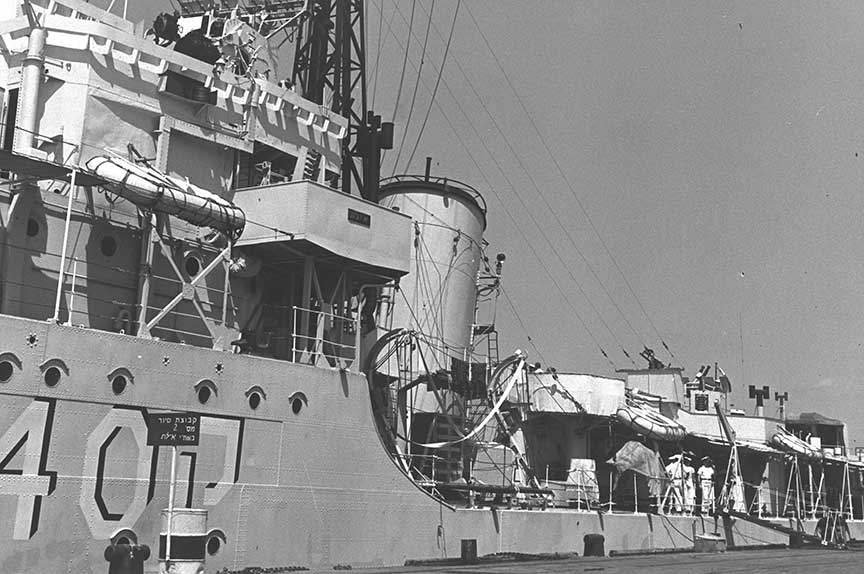1967- INS Eilat Sunk

Destroyer Eilat
On October 21, 1967 Egyptian Missile Boats atttacked and sunk the Israeli Destroyer INS Eilat in international waters.
Egyptian President Gamal Abdel Nasser convinced the Soviets to resupply his defeated Army, which allowed Nasser to take offensive actions against Israel. Nasser’s first action was against the Israeli Destroyer Eilat. Originally a British Z-class destroyer named HMS Zealous, INS Eilat was acquired by Israel in 1955. The Eilat was a 1,710-ton vessel equipped with a range of guns and anti-aircraft weapons.
On October 21, 1967, INS Eilat was on a routine patrol in international waters off the coast of Port Said, Egypt. The destroyer’s mission was to conduct surveillance and maintain a naval presence in the Mediterranean. At approximately 17:30, the Egyptian Navy launched a surprise attack using Soviet-made P-15 Termit (NATO designation: SS-N-2 Styx) anti-ship missiles from Komar-class missile boats. This unprecedented attack marked one of the first successful uses of anti-ship missiles in combat.
The first missile struck the Eilat amidships, causing significant damage and igniting a severe fire. Shortly after that, a second missile hit, which exacerbated the destruction and spread the blaze. Despite the ship's crew's efforts to manage the crisis, the situation deteriorated rapidly. About an hour later, as rescue operations were being organized, a second wave of missiles struck, causing the Eilat to capsize and sink.
The attack on the Eilat resulted in the deaths of 47 Israeli sailors and officers, with 100 more injured. The loss of INS Eilat was a devastating blow to the Israeli Navy, underscoring the lethal effectiveness of missile technology against traditional surface ships. Rescue efforts were complicated by the ongoing threat of additional missile attacks, but Israeli and foreign vessels in the vicinity managed to save many survivors from the water.
The strategic impact of the Eilat's sinking was profound. It highlighted the vulnerability of surface ships to missile attacks and fundamentally changed naval warfare. Recognizing this new threat, the Israeli Navy and defense establishment swiftly adapted. This led to significant investments in missile defense systems, including developing the Barak anti-missile system and shifting towards smaller, more maneuverable missile boats. These adaptations aimed to enhance the Israeli Navy's ability to respond to and neutralize missile threats. In retaliation for this costly attack, Israel launched a series of airstrikes against Egyptian targets, an act that effectively began the War of Attrition.
 >
>